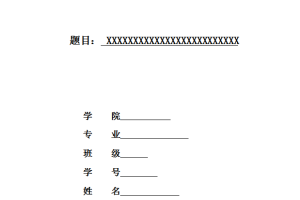摘 要
股票价格的波动性在理论界和实务界都是一个热点问题。本文借鉴金融市场波动性的统计特征研究的文献,运用Eviews和Spss为工具,检验了沪深300指数日收益率的波动性变化。研究表明:沪深300指数日收益率从序列分析上呈现尖峰厚尾等特点,并且对沪深300指数日收益率的波动率进行了估计,通过对预测效果的分析,发现GARCH-M(1,1)模型预测的波动率的效果是最好的。通过对实际波动率的效果图进行了模拟,更加证明了实证分析结论的正确性。结果表明,GARCH-M(1,1)模型能很好的度量我国股市的日收益率的波动。
关键词:沪深300指数;Eviews;GARCH-M(1,1)模型
Abstract
The volatility of stock price is a hot issue in theory and practice. This paper studies the statistical characteristics of the volatility of financial market in the literature, using Eviews and Spss as a tool to test the Shanghai and Shenzhen 300 index volatility rate of return. Research shows that: the Shanghai and Shenzhen 300 index daily return rate presents a sharp peaked and heavy tailed characteristics from the sequence analysis, and the fluctuations in the Shanghai and Shenzhen 300 index daily return rate were estimated, through analysis on forecasting result, found that volatility of GARCH (1,1) model to predict the effect is the best. Through the effect of actual volatility is simulated, more to prove the correctness of the conclusions of empirical analysis. The results show that the GARCH-M (1,1) model can be a good measure of China’s stock market yield fluctuations.
Keywords:Shanghai and Shenzhen 300 index; Eviews; GARCH-M (1,1) model
目录
摘 要……………………………………………………………………………………………………………………….. I
Abstract………………………………………………………………………………………………………………….. II
引 言…………………………………………………………………………………………………………………… 1
1波动率的研究背景和意义……………………………………………………………………………………….. 2
1.1波动率的概念……………………………………………………………………………………………….. 2
1.2波动率的研究背景………………………………………………………………………………………… 2
1.3研究波动率的意义………………………………………………………………………………………… 3
2股票市场波动率概念………………………………………………………………………………………………. 4
2.1波动率的类型……………………………………………………………………………………………….. 4
2.2波动率的预测模型………………………………………………………………………………………… 6
3沪深指数的实证分析………………………………………………………………………………………………. 6
3.1样本选取和数据来源…………………………………………………………………………………….. 6
3.2基本统计特征分析………………………………………………………………………………………… 7
3.3实证检验结果……………………………………………………………………………………………… 12
结 论…………………………………………………………………………………………………………………… 20
参考文献…………………………………………………………………………………………………………………. 21
致 谢…………………………………………………………………………………………………………………… 22





